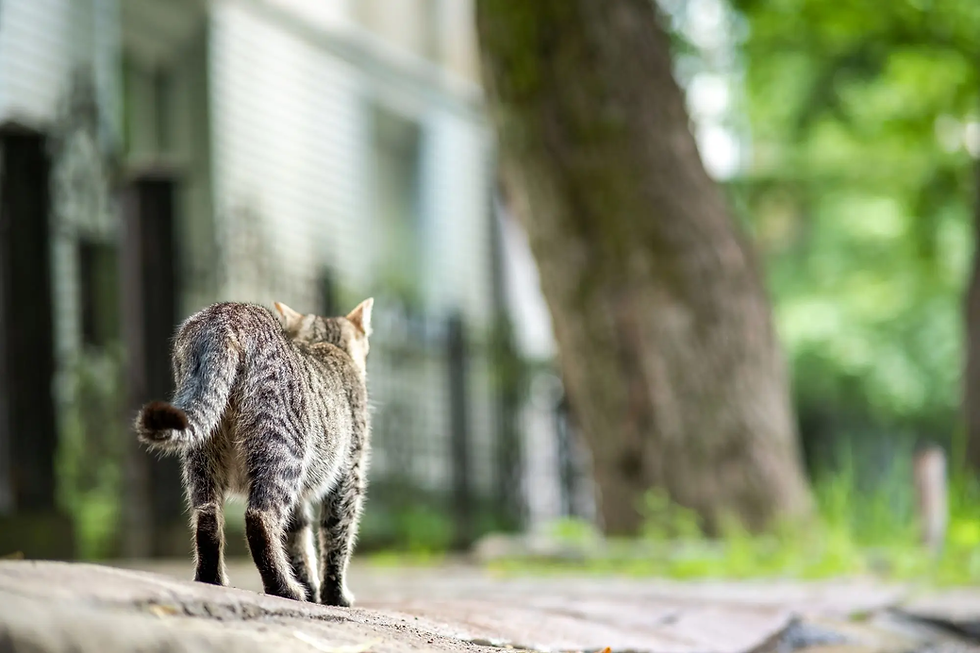The Importance of Cat Dental Checkups and Cat Carrier Training
- Dr. Mansum Yau

- Mar 13
- 3 min read
Your cat’s teeth get brushed. You use dental supplements and water additives. You feed dental food. Your cat’s teeth are good to go, right? Unfortunately, while dental homecare helps prevent disease, it doesn’t guarantee a healthy mouth.

A variety of other factors are involved, genetics being one of them. Accidents or cat fights can
lead to chipped or fractured teeth. Viral infections can lead to gum disease. Feline oral resorptive lesions, holes in the teeth, can develop. So can oral cancer.
Veterinarians are trained to detect oral disease that can be otherwise missed. Cats are masters at hiding pain and illness. Regular vet checkups — once a year for adults and twice a year for seniors — help detect painful conditions early, allowing for timely treatment. It’s the same as how it’s recommended for a dentist to check our teeth every 6-12 months.
At home, watch your cat eat. Just because your cat is still eating doesn’t mean their teeth are fine; they don’t have another set of teeth to eat with. Are they having difficulty chewing Dropping their food? Only chewing on one side of the mouth? Salivating? Do they have bad breath? If you see any of these signs, it’s time to take your cat to the vet even if they were seen less than 6-12 months ago.
How to Make the Cat Carrier Work For Your Cat
Now that you know the importance of dental checkups, making the trip to the vet stress-free is just as crucial. At least a few days before your vet appointment, take your cat carrier out for your cat to get acclimated to it. Better yet, leave it out all the time for them to use it as a cat bed. Waiting to take it out right before you have to leave can result in your cat running away to hide and you being late or missing your appointment altogether.

The goal is for your cat to not be scared of their carrier, so the trip to the vet isn’t as stressful. Please don’t skip using a carrier because it would be like skipping the use of a child car seat, seat belt, and helmet. The carrier protects your cat from injuries in a vehicle collision, escaping and getting lost, and being bitten by dogs or other animals at the vet clinic.
The carrier should be a sanctuary for your cat: one that is clean, cozy, and safe. When your cat isn’t scared of their carrier, it makes taking them to the vet easier. When they’re less stressed in the carrier, hopefully, they’ll be more amenable to the vet checking their teeth and doing other procedures to help alleviate pain and improve their quality of life.
Want to make vet visits easier? My illustrated book, The Ins and Outs of Cat Carriers: A Veterinarian’s Guide to Cat Carriers, is packed with tips to help your cat feel safe and comfortable in their carrier. Available now on Amazon and Waterstones online!
About the Author

Dr. Mansum Yau is not your ordinary veterinarian. With a passion for feline health and a knack for making people laugh, Dr. Mansum has carved a unique niche in the literary world with The Ins and Outs of Cat Carriers: A Veterinarian's Guide to Cat Carriers.
When not treating whiskered patients, she's raising awareness for endangered animals. Dr. Mansum can also be found doing (clean) stand-up comedy or creating captivating illustrations for the next bestseller.



Comments